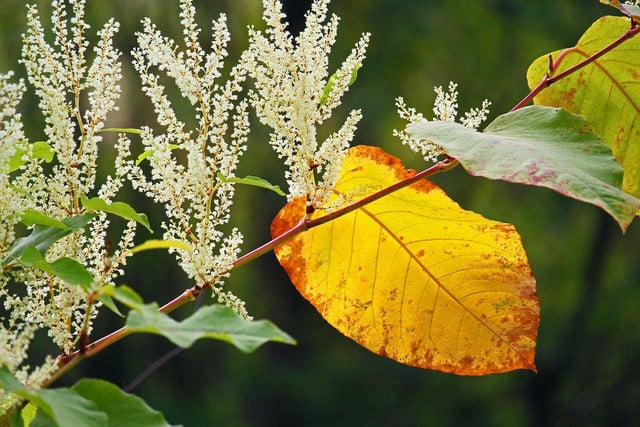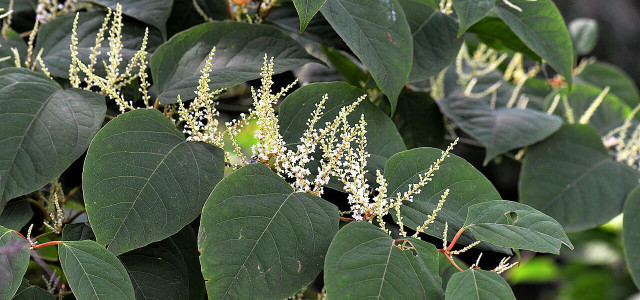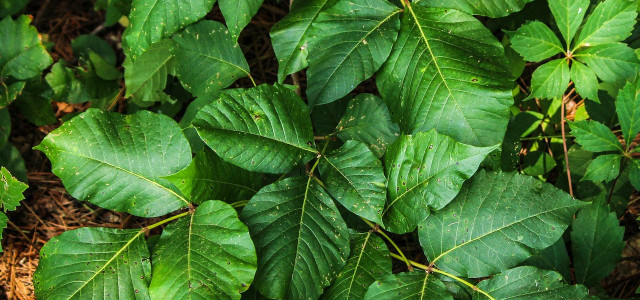This plant can form towering thickets and break through pavement. Learn proper Japanese knotweed identification and how to remove this pesky plant here.
Japanese knotweed (fallopia japonica) a perennial shrub and one of the most damaging invasive plants in the United States. As the name suggests, it was brought over from Japan as a hearty ornamental plant, but rapidly spread outside of gardens and into the environment, preferring moist and fully sunny areas. Proper Japanese knotweed identification reveals why it is so harmful: the plant forms a dense canopy of leaves that can grow up to ten feet tall, completely smother native plants, and even obstruct waterways. Worse, however, is its capacity to regrow and spread rapidly via an underground system of roots. Classified as a noxious weed in several states, it can even grow through pavement and cracks in masonry.
Tips on Japanese Knotweed Identification



Japanese knotweed identification is fortunately not difficult if you know what to look for. The plants typically form towering dense bushy colonies in areas where soil may have recently been disturbed. Here is what to look for:
- Location: Japanese knotweed prefers sunny, moist locations, often near a water source. Since they spread mostly though soil, Japanese knotweed is often found in more developed areas such as around highways, ponds, or drainage ditches. It usually does not grow in forests or heavily shaded areas.
- Leaves are heart-shaped which grow in an alternating zig-zag pattern down the stems.
- Stems look similar to bamboo with dark rings running up the length.
- Young shoots are often reddish, looking like a cross between bamboo and asparagus.
- Flowers form white inflorescences blooming along upright stems on the branches.
Managing Japanese Knotweed



After successful Japanese knotweed identification, the next step should be management and removal. Although this weed is hearty and will regrow rapidly, it is possible to get rid of an infestation. Here’s how:
- Cut it: When you first identify Japanese knotweed, you should cut it immediately to prevent the leaves from gathering sunlight as fuel. Since Japanese knotweed regenerates rapidly, you will need to mow down new sprouts regularly. The plant will eventually weaken and die, but this may take months or even years with cutting alone.
- Smother it: Instead of continually mowing new shoots, you can cover the chopped stems with a dark tarp. Once the plant loses access to sunlight, it will gradually become too weak to grow, although this may also take several months.
- Dig it up: Since Japanese knotweed will regrow continuously by drawing energy from its roots, the most definitive method of removal is to dig them up. Be careful, as even fragments of roots have the potential to sprout new plants.
- Eat it: Although not a solution for mature plants, young Japanese knotweed shoots are edible with a flavor similar to lemony rhubarb. Avoid eating mature plants or any that may have been treated with herbicides or exposed to water runoff. Japanese Knotweed is one of many common weeds you can eat.
- Use herbicides: Most commercial herbicides (such as Roundup) will be effective at damaging Japanese knotweed, but this method also runs the risk of leaching the chemicals into rain runoff and harming other plants or animals exposed to it. Use this method as a last resort once plant has been weakened through the previous methods, otherwise it may survive. Consider making a homemade weed killer from organic ingredients as an alternative.
Read more:
- Stinging Nettle Benefits: How to Use Stinging Nettles as Medicine, in the Garden, and in the Kitchen
- Removing Moss: How to Kill Moss in Your Lawn
- Keep Squirrels Out of Your Garden Naturally: Tips & Tricks
Do you like this post?








